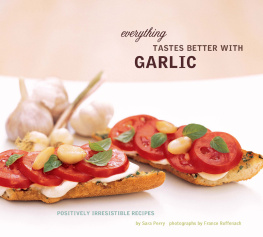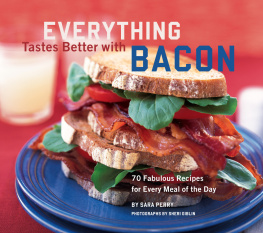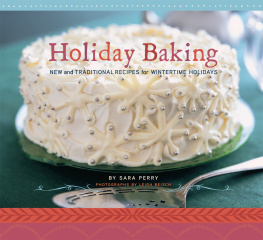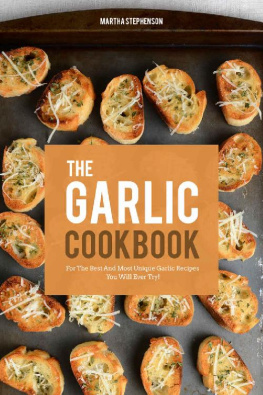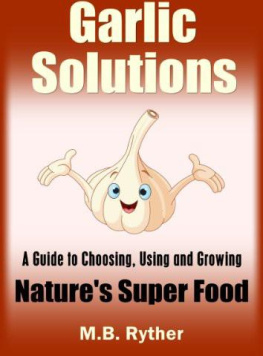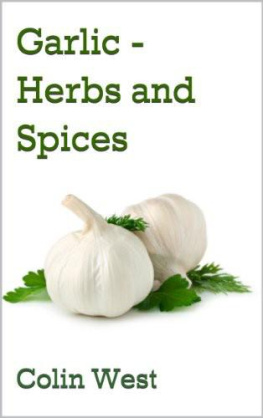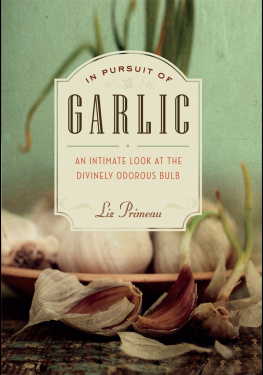Thanks go to the many chefs and cooks I have interviewed over the years for the Oregonians TasteMaker column and to those friends and colleagues who generously shared their ideas, expertise, time, and recipes, especially Jane Zwinger, Suzy Kitman, Karen Brooks, Kathlyn Meskel, Susan Friedland, chef Randall Cronwell, chef Eric Laslow, chef Leather Storrs, chef Jeanne Subotnick, Betty Rosbottom, and Sharon Maasdam. To copy editor Rebecca Pepper, who helped me mind my ps and qs. To Karen Kirtley, whose editorial eye, attention to detail, love of words, and warm friendship are invaluable. To France Ruffenach and her team for creating such beautiful photographs. And to Sara Schneider for her serene, elegant, and lively sense of style and design.
Imagine cooking without it. Who would onions play with? What would happen to Italian food? Caesar salad? Pistou? Life without garlic? Impossible.
Think about iteverything tastes better with garlic. Well, almost everything. The world may have yet to invent a fabulous garlic-tiered tiramis, but make no mistake: lines form deep and wide for garlic ice cream at the Gilroy Garlic Festival.
Garlic is the spice of life, the herb of choice, and the vegetable we all love to eat, rolled into one many-cloved bundle. It even comes gift-wrapped in papery tissue. What more could you ask for?
To love garlic, to completely give yourself over to its glory, is to banish all worries about breath and bad odors. Garlic tastes fabulous. I repeat: Garlic tastes fabulous. Its magic fills your mouth with a fantastic flavor. As for the smell, heck, its downright perfume. The beauty of garlic is that it can be as sweet and delicate as a first kiss or as lively and lusty as an all-night orgy. Its all in the way it is wooed.
Cooks have always known that garlic adds distinctive flavor, earthy aroma, and subtle nuance to classic cuisines and everyday foods. Its pungent while raw, mellow when cooked, rich and nutty when roasted and caramelizedthe more you fool around with garlic, the more it fools around with you. A single clove minced to a teaspoon adds a potent message to salad dressing, while a whole bulb left to simmer in a stew lends a subtle, meaningful undertone. With garlic, pastas pulsate; soups and sauces soar; meats, poultry, and seafood rise up and sing; and the vegetables all get eaten. More than any flavoring, garlic has the power to substitute for salt and the strength to stimulate the palate.
According to myth and legend, there is little garlic cannot do. Worn around the neck, the mystical bulb is mightier than the sword as a vampire slayer. Pressed to make a potion, it can banish disorders and infections. Hung in bunches on the door of a bride-to-be, it guarantees a blissful union. And when planted around roses, it makes aphids drop like flies. No wonder King Tut stashed six bulbs in his tomb for the afterlife.
Everything Tastes Better with Garlic is here to help you unravel the marvels of garlic. It explains the ways to peel, press, smash, slice, cut, and chop garlic, and it includes photographs to show you how each form should look. Why? Because garlics effect on a dish depends on how you first prepare it. A table of garlic equivalents helps you know that when a dish calls for 2 tablespoons of chopped garlic, youll need 4 large cloves, or when a recipe needs 1 minced medium clove, youll end up with a firmly-packed 3/4 teaspoon.
Dont hold your breath, but Everything Tastes Better with Garlic aims to set the record straight on the odor question. What causes it? What do people do about it? Youll find answers to these and other nagging little questions: Whats that little green thing sprouting from a clove, and what do I do with it? Can I use the garlic braid thats been hanging on my kitchen wall for more years than I can remember?
Everything Tastes Better with Garlic has more than 65 recipes. Theyre simple, theyre delicious, and theyre full of great garlic flavor. Treasured favorites like Caesar salad, garlic mashed potatoes, chicken with forty cloves, and old-fashioned garlic bread are here for the asking, along with sassy new-comers such as Spring Vegetable Soup with Toasted Garlic Bread Crumbs and Grilled T-Bone Steaks with Garlic Bourbon Barbecue Sauce. (Theres even a yummy Lets Feel Better Broth, for when you need to play Dr. Mom.)
Youll search for any excuse to entertain so you can treat yourself to Beef Tenderloin with Port Garlic Sauce, Garlic Risotto with Baby Peas and Truffle Oil, or Pan-Roasted Seafood with Smoky Paprika and Roasted Garlic. (Sure, company will be just as happy with Six Cloves Mac and Cheese or Coney Island Hot Dogs with Damn-Good Garlic Sauce served with Crispy Garlic Potato Chips. Wouldnt you?)
I used to think all garlic was created equal and came dressed in white. But a world of fashionable garlic is out there waiting to be discoveredgarlic of various colors, sizes, shapes, and tastes. To help you explore garlic in its many guises, Ive included a handy resource guide with farms and garden sources, a year-round calendar of garlic festivals, tips on interesting books and savvy Web sites. So get ready for some fun and some great-tasting garlic.
Lets face it. In a world where you crave what tries to kill you, or at least to harden your arteries, garlic is one of those rare addictions that is actually good for you. Hmmgarlic martini anyone? With this versatile bulb, anything goes.
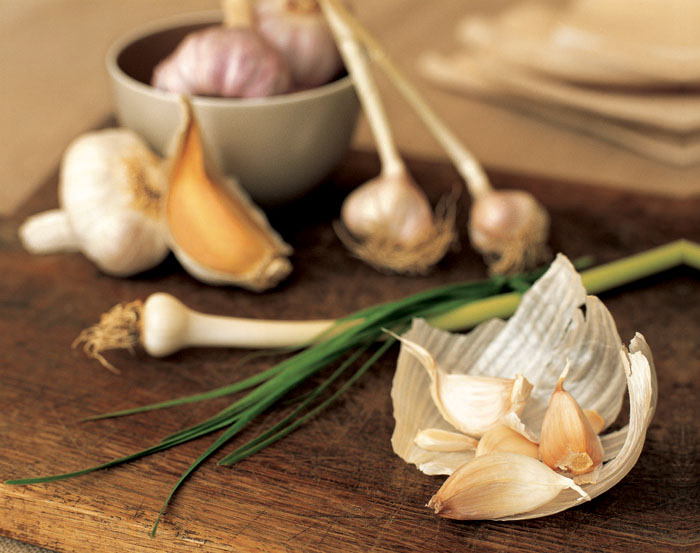
WHAT IS GARLIC?
Garlic is a plant that makes the world a more flavorful place. It belongs to the lily family (thats right: its a kissing cousin of those fragrant, showy lilies growing in your garden). With its characteristically compact, underground bulb, garlic shares the same genus (Allium) with onions, leeks, chives, and shallots. For our enjoyment, this herbaceous perennial is grown as an annual and harvested each year. If it were left in the groundand not harvested for us to eatthe bulb would produce a stalk with white flowers and seeds, year after year. When divided, those familiar bulbs give us papery, perfumed packets of earthy delight, otherwise known as cloves.
Garlic has been cultivated for thousands of years, so it is not surprising that there are many varieties that differ in pungency, taste, size, shape, and color. Allium sativum is the garlic we use most often in cooking; within that grouping are the cultivated softneck (sativum) and hardneck (ophioscorodon) subgroups.
Next time you touch the top of a garlic head, feel for a hard stick in the middle. If it isnt there, youre holding a softneck.
Widely available in supermarkets, softneck varieties are easier to grow than hardneck varieties and offer the longest shelf life. Their skin is usually white or silvery. The two classic softneck varieties are called California Late and California Early. Others include Creole, Egyptian, and the milder Italian.
Hardneck garlic (the kind that has the stick in the middle) is more perishable, so youre apt to spot more of these varieties at local farmers markets or in a supermarkets specialty produce section in the summer and early fall. Their cloves are usually bigger (and easier to peel) than those of softneck garlic and have a wider color and flavor range. Spanish Roja, a red-skinned Oregon heirloom with an earthy taste, is the best-selling hardneck; others include Armenian, Mazatln, and La Panant Kari, originally from the Republic of Georgia.

